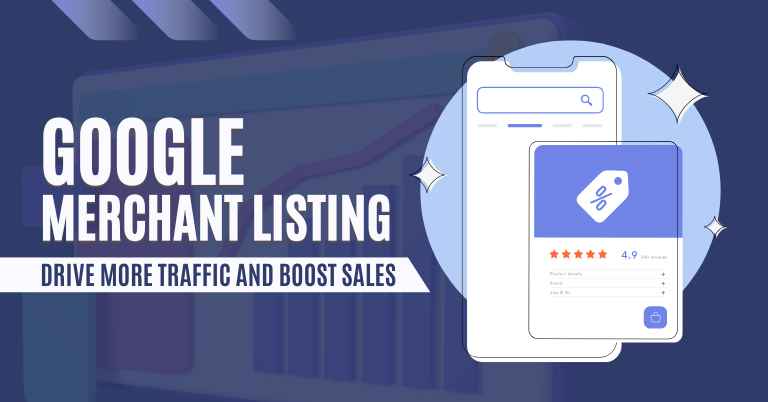Companies can create more interactive and engaging digital content by incorporating multimedia elements and encouraging audience participation. This includes using videos, infographics, and interactive quizzes to capture the audience’s attention and make content more enjoyable and interactive.
Let's See the Topic Overview
Understanding The Importance Of Interactive Content
Understanding the importance of interactive content is crucial for companies looking to create more engaging and dynamic content. By incorporating elements such as quizzes, surveys, and interactive videos, businesses can boost user interaction, enhance brand awareness, and drive customer engagement.
Start exploring the power of interactive content today!
In today’s digital landscape, creating interactive content has become increasingly vital for companies looking to engage their audiences and stand out from the competition. Interactive content refers to any type of content that actively involves the audience, encouraging them to participate, interact, and engage with the material.
From quizzes and polls to games and calculators, interactive content has proven to be highly effective in capturing and maintaining users’ attention. Let’s delve into the benefits of interactive content in driving engagement:
The Benefits Of Interactive Content In Driving Engagement:
- Increased user engagement: Interactive content encourages users to actively participate, making them more engaged and invested in the content. This results in longer average time spent on the page and higher click-through rates.
- Enhanced brand awareness: By creating interactive content that aligns with your brand’s values and messaging, you can increase brand visibility and recognition. Interactive content is more likely to be shared on social media, amplifying your brand’s reach.
- Improved data collection: Interactive content often requires users to provide information or answer questions. This enables companies to collect valuable data on user preferences, interests, and behaviors, which can inform future marketing strategies.
- Higher conversion rates: The immersive nature of interactive content can lead to higher conversion rates. By presenting your audience with interactive elements that guide them through the buyer’s journey, you can increase the chances of converting them into customers.
How Interactive Content Can Foster Better Customer Connections:
- Personalized experiences: Interactive content enables companies to tailor the user experience based on individual preferences and needs. By providing personalized recommendations or interactive product demos, you can create a stronger connection with your customers.
- Two-way communication: Interactive content facilitates direct communication between companies and their audience. This allows for feedback, comments, and discussions, fostering a sense of community and connection.
- Emotional resonance: When users actively engage with content, they are more likely to form emotional connections with the brand. Emotional resonance increases brand loyalty and encourages customers to become advocates.
Examples Of Successful Interactive Content Campaigns:
- BuzzFeed’s quizzes: BuzzFeed’s quizzes are renowned for their ability to captivate users and drive social media shares. Their interactive nature and humorous approach resonate with audiences, making them highly engaging.
- Nike’s “Create Your Own Shoe” feature: Nike allows customers to design their own shoes using an interactive tool on their website. This not only provides a fun and engaging experience but also helps Nike gather valuable insights into customer preferences.
- HubSpot’s Marketing Grader: HubSpot’s Marketing Grader provides users with a comprehensive assessment of their marketing efforts. This interactive tool attracts users, providing them with actionable insights and positioning HubSpot as a trusted resource.
By understanding the importance of interactive content, companies can unlock opportunities to engage their audiences, build stronger customer connections, and drive their business forward in a highly competitive digital landscape.
Planning Interactive Content Strategy
Companies looking to create more interactive and engaging content can benefit from strategic planning. By incorporating interactive elements such as quizzes, surveys, and polls, businesses can enhance user engagement and provide valuable insights into their target audience’s preferences and interests.

This approach helps captivate users, encourage interaction, and foster stronger connections between brands and their online audience.
In today’s digitally-driven world, companies strive to create engaging and interactive content to captivate their target audience. Planning a well-thought-out interactive content strategy is key to achieving this goal. Here are some crucial steps to consider:
Identifying Target Audience And Their Preferences:
Understanding your target audience is essential for creating content that resonates with them. Use these strategies to identify their preferences:
- Conduct thorough market research to gain insights into your target audience’s demographics, interests, and behavior.
- Utilize customer surveys, interviews, and social media analytics to gather specific data on their content preferences.
- Analyze your website and social media analytics to understand the type of interactive content that receives the highest engagement.
Setting Clear Objectives For Interactive Content Initiatives:
Clearly defined objectives help guide your interactive content creation efforts. Consider the following when setting your objectives:
- Determine the purpose of your interactive content, whether it’s to educate, entertain, or inspire your audience.
- Define measurable goals such as increasing website traffic, boosting brand awareness, or enhancing lead generation.
- Align your content objectives with your overall marketing and business goals to ensure consistency and effectiveness.
Conducting Competitor Analysis To Gain Insights:
Analyzing your competitors’ interactive content can provide valuable insights and help you differentiate your brand. Follow these steps:
- Identify key competitors within your industry and analyze their interactive content strategies.
- Examine the types of interactive content they create, the platforms they use, and their engagement levels.
- Identify any gaps or areas of improvement to ensure your content stands out from the competition.
Leveraging Data And Analytics To Inform Content Strategy:
Data and analytics play a crucial role in crafting an effective interactive content strategy. Here’s how you can leverage them:
- Use web analytics tools to track user behavior, time spent, and conversion rates on your interactive content.
- Analyze the data to understand which interactive elements perform best and make data-driven decisions for future content creation.
- Monitor social media metrics to assess the impact and reach of your interactive content campaigns.
By implementing these strategies and leveraging the power of interactive content, companies can create more engaging experiences for their target audience and achieve their marketing goals effectively.
Choosing The Right Interactive Content Formats
Looking for ways to create more interactive and engaging content? Consider choosing the right interactive content formats. These formats can captivate your audience and enhance their overall experience, resulting in increased user engagement and brand visibility.
Exploring Various Formats Such As Quizzes, Polls, And Surveys
Interactive content formats such as quizzes, polls, and surveys can significantly enhance user engagement and create a memorable experience for your target audience. By incorporating these formats into your content strategy, you can effectively capture attention, drive participation, and gather valuable insights from your audience.
Here are some key points to consider:
Quizzes:
- Quizzes are an excellent way to entertain and educate your audience simultaneously.
- They can be used to test knowledge, personality traits, or preferences.
- Quizzes appeal to people’s natural curiosity and desire to challenge themselves.
- They can convey information in a fun and interactive manner.
Polls:
- Polls allow you to gather opinions and sentiments from your audience.
- They are quick and easy to participate in, making them highly accessible.
- Polls can be used to gather feedback on various topics or to make data-driven decisions.
- They create a sense of inclusivity, showing that you value your audience’s opinions.
Surveys:
- Surveys provide a more in-depth understanding of your audience’s needs and preferences.
- They can be used to collect demographic information or customer feedback.
- Surveys help tailor your content and improve your products or services based on real insights.
- They demonstrate a commitment to customer satisfaction and continuous improvement.
Understanding The Strengths And Weaknesses Of Each Format
While quizzes, polls, and surveys are all effective in engaging your audience, it’s important to recognize their strengths and weaknesses to choose the most appropriate format for your content. Consider the following:
Quizzes:
Strengths:
- They offer an interactive and entertaining experience that can captivate your audience.
- Quizzes can quickly generate social shares and promote virality.
- They provide an opportunity to educate your audience while they’re engaged in the content.
Weaknesses:
- Creating high-quality quizzes requires careful planning, research, and creativity.
- They may not provide as much depth or feedback as other formats like polls or surveys.
Polls:
Strengths:
- Polls are easy to create and participate in, making them highly accessible.
- They provide immediate results that can be used to inspire discussions.
- Polls can gather real-time data, making them suitable for time-sensitive topics.
Weaknesses:
- Polls may not provide detailed insights into audience thoughts or motivations.
- They can be limited in scope and may not capture the full complexity of a topic.
Surveys:
Strengths:
- Surveys provide detailed and comprehensive insights into audience preferences.
- They allow for more personalized data collection, enabling targeted marketing efforts.
- Surveys can uncover hidden patterns or trends within your audience.
Weaknesses:
- Surveys may require a longer time commitment from participants, leading to lower response rates.
- Analyzing and interpreting survey data can be time-consuming and complex.
Aligning Content Formats With Target Audience Preferences
To create more interactive and engaging content, it’s crucial to align your chosen formats with your target audience’s preferences. Consider the following when making your decisions:
- Research your audience:
- Understand your target audience’s demographics, interests, and online behaviors.
- Analyze previous engagement metrics to identify their preferred content types.
- Experiment and analyze:
- Test different interactive formats to see which ones resonate the most with your audience.
- Monitor engagement levels, click-through rates, and conversion rates to measure impact.
- Personalization and segmentation:
- Tailor your interactive content to specific audience segments or buyer personas.
- Use data from quizzes, polls, and surveys to create personalized recommendations.
- Stay up to date:
- Continuously track industry trends and popular interactive content formats.
- Adapt your content strategy to incorporate new and emerging formats to keep your audience engaged.
Using Interactive Media Like Videos And Infographics
In addition to quizzes, polls, and surveys, incorporating interactive media like videos and infographics can take your content to the next level. These formats offer visual appeal and multimedia elements that enhance engagement and comprehension. Consider the following:
Videos:
- Videos provide an immersive and visually appealing way to communicate your message.
- They can convey complex information in an easily digestible format.
- Videos capture attention quickly and can be shared across multiple platforms.
- Use videos to demonstrate products, provide tutorials, or tell compelling stories.
Infographics:
- Infographics condense information into visually appealing and easy-to-understand designs.
- They make data or statistics more engaging and memorable.
- Infographics can be shared on social media or included in blog posts.
- Use infographics to illustrate processes, present research findings, or summarize content.
By choosing the right interactive content formats and aligning them with your target audience’s preferences, you can create more engaging content that captivates your readers and drives meaningful interactions. Incorporating interactive media like videos and infographics further enhances the overall experience, making your content even more appealing and shareable.
Integrating Interactive Elements Into Existing Content
Discover innovative ways for companies to enhance their content by integrating interactive elements. Engage your audience through interactive features to create a more immersive and interactive experience that keeps them coming back for more. Don’t miss out on the opportunity to captivate your readers and improve user engagement.
Assessing Existing Content For Interactive Potential:
- Analyze your current content to identify opportunities for adding interactive elements.
- Look for content types that lend themselves well to interactivity, such as quizzes, polls, or interactive infographics.
- Consider the goals of your content and the audience you’re targeting when assessing its potential for interactivity.
- Evaluate the relevancy and engagement levels of your existing content to determine where interactive elements could enhance the user experience.
- Assess the feasibility of adding interactive elements to your content based on resources, budget, and technical considerations.
Adding Interactive Elements To Blog Posts And Articles:
- Incorporate interactive components like embedded videos, slideshows, or interactive charts and graphs to enrich your blog posts and articles.
- Use interactive quizzes and surveys to encourage reader engagement and gather valuable insights.
- Include clickable images or infographics that allow readers to explore different sections in more detail.
- Consider incorporating interactive storytelling techniques, such as choose-your-own-adventure narratives or interactive timelines.
- Experiment with different types of interactive content to find what works best for your audience and objectives.
Incorporating Interactive Features In Social Media Posts:
- Create interactive social media posts that encourage audience participation and interaction.
- Utilize features like polls, quizzes, and contests to increase engagement and generate buzz around your content.
- Encourage users to leave comments, ask questions, or share their own stories and experiences related to the post.
- Use interactive elements to foster conversations and build a community around your brand or content.
- Leverage social media analytics to gather insights on user engagement with your interactive posts and refine your social media strategy accordingly.
Ensuring Seamless User Experience Across Platforms:
- Optimize your interactive content for mobile devices to ensure a smooth user experience on smartphones and tablets.
- Test your interactive elements across different browsers and devices to ensure compatibility and functionality.
- Regularly update and maintain your interactive content to keep up with technological advancements and evolving user expectations.
- Consider integrating responsive design principles to provide a consistent interactive experience across various screen sizes.
- Seek user feedback and monitor analytics to identify areas for improvement and make necessary adjustments to enhance the user experience.
Creating Engaging Interactive Content
Companies can create more engaging and interactive content by utilizing methods such as incorporating multimedia elements, encouraging user participation, and implementing gamification techniques. This approach enhances user experience, increases audience engagement, and fosters a stronger connection with the brand.
Designing visually appealing and user-friendly interfaces:
- Use attractive colors and fonts to capture users’ attention.
- Ensure intuitive navigation and easy accessibility to information.
- Incorporate interactive elements such as animations, videos, and sliders.
- Optimize loading times for a seamless user experience.
Crafting compelling and interactive narratives:
- Begin with a hook to engage readers from the start.
- Tell stories that resonate with your target audience.
- Use conversational language and relatable examples.
- Encourage user participation through surveys, polls, and quizzes.
Incorporating gamification elements for increased engagement:
- Add game-like features such as badges, leaderboards, and virtual rewards.
- Create challenges and interactive competitions.
- Offer incentives and rewards to motivate user participation.
- Foster a sense of achievement and friendly competition.
Implementing responsive and mobile-friendly designs:
- Ensure content displays and functions properly across devices.
- Optimize images and videos for different screen sizes.
- Use responsive layouts to adapt to various devices and orientations.
- Prioritize easy navigation and touch-friendly interactions.
By following these guidelines, companies can create interactive and engaging content that captivates their audience, encourages active participation, and leaves a lasting impression. Remember, designing visually appealing and user-friendly interfaces, crafting compelling and interactive narratives, incorporating gamification elements, and implementing responsive and mobile-friendly designs are key to creating content that stands out in this digital age.
Promoting And Distributing Interactive Content
Companies can create more interactive and engaging content by promoting and distributing interactive content. This can be achieved through various methods such as incorporating interactive elements like quizzes and polls, utilizing multimedia formats, and encouraging user participation. Effective promotion and distribution strategies can help companies reach a wider audience and enhance user engagement.

One of the key aspects of creating interactive and engaging content is ensuring that it reaches a wide audience. By promoting and distributing your content effectively, you can maximize its reach and engagement. Here are some strategies to consider:
Leveraging Social Media Platforms For Maximum Reach:
- Utilize popular social media platforms such as Facebook, Twitter, Instagram, and LinkedIn to share your interactive content.
- Create visually appealing posts with catchy headlines and captions to capture the attention of your audience.
- Engage with your followers by responding to comments and messages, encouraging them to share your content with their own networks.
- Use relevant hashtags to increase visibility and reach a larger audience.
- Consider running paid social media campaigns to target specific demographics or interests.
Collaborating With Influencers To Amplify Content Exposure:
- Identify influencers in your industry who have a large and engaged following.
- Reach out to these influencers with a proposition to collaborate on your interactive content.
- Offer them exclusive access to your content or incentives to share it with their audience.
- Leverage the trust and credibility that influencers have built with their followers to increase the exposure and engagement of your content.
- Monitor the performance and impact of the influencer collaborations, and adjust your approach as needed.
Optimizing Content For Search Engines With Relevant Keywords:
- Conduct thorough keyword research to identify relevant and high-volume keywords related to your interactive content.
- Incorporate these keywords naturally throughout your content, including in headings, subheadings, and body paragraphs.
- Optimize your meta tags, including the title tag and meta description, to include relevant keywords and entice users to click through to your content.
- Ensure your content is easily crawlable by search engines by organizing it with proper headings and subheadings, using alt tags for images, and incorporating internal and external links.
Utilizing Email Marketing And Newsletter Campaigns:
- Engage your audience through email marketing by offering exclusive access to your interactive content or special promotions.
- Segment your email lists based on user interests or demographics to deliver targeted content.
- Create visually appealing and informative newsletters that highlight your interactive content and encourage readers to share it with others.
- Monitor the performance of your email campaigns, including open rates and click-through rates, and make adjustments as necessary to optimize engagement.
By implementing these strategies, companies can effectively promote and distribute their interactive content, reaching a wider audience and driving engagement. Remember to analyze the performance of each tactic and adapt your approach to maximize results.
Measuring The Success Of Interactive Content
Companies can create more interactive and engaging content by measuring its success through various metrics such as click-through rates, time spent on a page, and social media shares. By analyzing these data points, companies can refine their content strategy to create more impactful and interactive experiences for their audience.
Tracking and analyzing user engagement metrics:
- Use analytics tools to track metrics such as time on page, bounce rate, and click-through rates to gauge the effectiveness of interactive content.
- Monitor user behavior to identify which elements of the interactive content are engaging and which ones may need improvement.
- Track the number of social shares, comments, and likes to measure the content’s popularity and reach.
Conducting A/B testing to optimize content performance:
- Create multiple variations of the interactive content and test them simultaneously to compare which version performs better.
- Analyze user responses and engagement metrics to determine which elements or features appeal more to the audience.
- Optimize and refine the interactive content based on the results of A/B testing to increase user satisfaction and maximize engagement.
Gathering feedback and insights from users:
- Encourage users to provide feedback through surveys, comment sections, or interactive polls within the content.
- Analyze comments and feedback to understand user preferences, find areas for improvement, and gather insights for future interactive content creation.
- Engage with users directly to address concerns, answer questions, and show appreciation for their input.
Continuously improving and refining interactive content strategies:
- Regularly review and analyze user engagement data to identify trends, patterns, and areas for improvement.
- Stay updated on industry trends and competitors’ interactive content strategies to ensure your content remains competitive and engaging.
- Experiment with new interactive content formats and technologies to keep your content fresh and innovative.
By implementing these strategies, companies can measure the success of their interactive content, optimize its performance, gather valuable insights from users, and continually improve and refine their interactive content strategies. Remember, success lies in understanding your audience, tracking metrics, and adapting to their preferences to create more engaging and interactive content.
Conclusion
Creating interactive and engaging content has become crucial for companies looking to effectively connect with their target audience. By implementing a few key strategies, companies can elevate their content and leave a lasting impact on their audience. Firstly, companies should focus on incorporating multimedia elements such as videos, infographics, and interactive quizzes to make their content more visually appealing and interactive.
This helps to captivate the audience’s attention and encourage them to spend more time engaging with the content. Secondly, companies should actively encourage audience participation through comments, social media shares, and polls. By encouraging open dialogue and feedback, companies can foster a sense of community and build trust with their audience.
In addition, personalization is key to creating engaging content. Tailoring content to the specific needs and preferences of the target audience helps to make it more relevant and relatable, increasing audience engagement. Lastly, companies should continuously analyze and measure the performance of their content to identify what works best for their audience.
By leveraging data and insights, companies can refine their content strategies and ensure maximum engagement. Creating interactive and engaging content is an ongoing process that requires continuous adaptation and innovation. By following these strategies, companies can effectively connect with their audience, build brand loyalty, and drive business growth.












